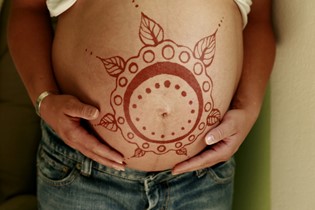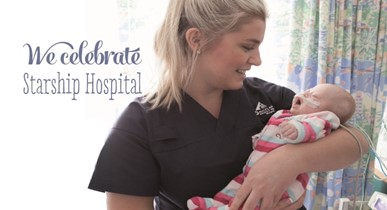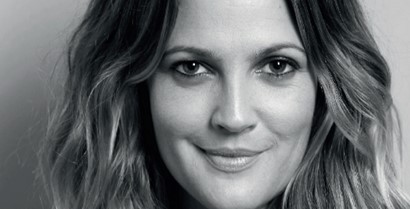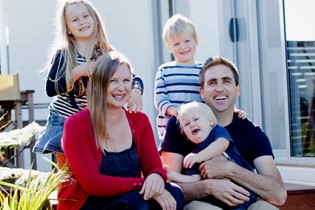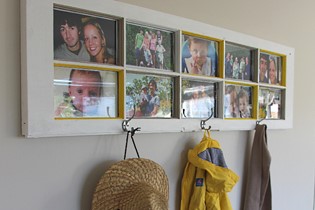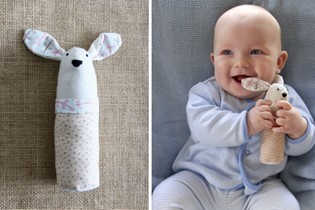Starship Children's Hospital - We Salute You
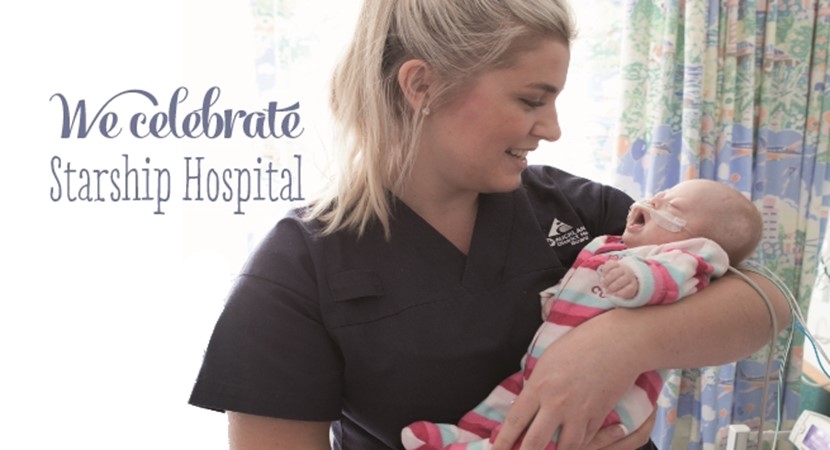
In honour of the fine work of Starship, health journalist and mum to one of its out-patients Paulette Crowley examines the birth and life of our national children’s hospital.
I remember the first time I had cause to enter Starship Children’s Hospital. It was 2000 and I was a brand new mum with a nine-day-old baby who had been born four weeks premature. I was also terrified. A jumble of panic, questions and hormones, I trembled and tried not to sob as I sat with the specialist health team who had called me into an “urgent meeting” about my sweet baby girl, Helena. It was definitely one of those moments when you know your life is about to dramatically change course.
Yes, the condition she was diagnosed with was pretty dramatic – a rare inherited metabolic disorder that required a seriously strict diet and absolute dedication from her professional health team and our family. If the diet was not adhered to, severe mental retardation was possible. If it was followed strictly, things would be normal – no drugs, needles, operations or limited life. My little girl would grow up to reach her full potential, the Starship team told me. And she has. Now 13, she is a beautiful, bright, sassy teenager who is ready to take on the world. We were one of the lucky ones.
For the children and families not so fortunate and whose journeys have gone down even more challenging paths, all I can say is, “Thank God for Starship.” Because, if something does happen to your precious baby or child, you couldn’t wish for a more professional, talented, dedicated and compassionate team to be by your side.
Kiwis haven’t always been so lucky to have an internationally respected and renowned children’s health facility.
Prior to Starship 22 years ago, children in the Auckland area were treated at Princess Mary Hospital. Originally constructed in 1918, this building was then developed into a temporary children’s health facility in 1942, with the intention of being used for only five years. It operated for 50. Equipment on the ward was archaic, the peeling walls were mouldy and there was no air conditioning. Rats and cockroaches ran riot. Decrepit was a fitting word for the building’s structure: one nurse recalled that heavy machinery could not be moved to some areas as the uneven and rotting floors would collapse.
Princess Mary was barely more than a dilapidated ward that reflected the medicinal culture of the time: unwell children were treated as sick, small adults. Paediatricians and any other health specialists related to treating children were considered unnecessary and expensive.
Call for a change
Since the 1950s, the call for a modern and functional children’s hospital rang loudly from Princess Mary staff and many in the community but was met with opposition from politicians and, ironically, the medical profession.
It wasn’t until 1981 that Health Minister Anthony “Aussie” Malcolm put his political might behind the cause, and plans for what was to become Starship took shape. His power and passion were absolutely necessary as the project was contentious and met with protest at every turn. “If money was floating around for a children’s hospital, there were scores of doctors who wanted to divert it away from children toward their particular specialty. They wanted to divert the children, as well,” he said.
Eventually, Mr Malcolm drafted a bill for a $35 million, 188-bed children’s hospital with the vision of uniting all functions of child health, integrated with a medical school and research opportunities to “… add lustre and mana to the practice of paediatrics throughout New Zealand.”
His efforts were supported by a mass media campaign that culminated in a petition of 50,000 signatures presented to parliament. Funds of $1.5 million – a huge sum at that time – were raised to help build the hospital.
A star is born
Despite constant conflict and controversy, Starship opened the doors to its pastel-painted hallways in 1991 at a cost of $78 million. Sir Bob Harvey, who helped form the Starship Foundation despite ferocious opposition from many who thought it was frivolous, coined its imaginative name. Said one nurse from Princess Mary Hospital: “It’s commercial, it’s cheap, and it is bastardising health and children’s health.”
Sir Bob, formerly an advertising executive and Waitakere City’s mayor, said the name was inspired by a 10-year-old boy who compared riding the hospital’s elevators to travelling inside a rocket. “Starship” was popular with the community and media and it rejuvenated the grey image of kids’ health. The Starship Foundation has raised tens of millions of dollars for the hospital over the years, and credits its user-friendly moniker, which has been vigorously defended in the face of numerous attempted name changes over the years by different health administrations, as one of its strengths.
Having fun is part of treatment
One of the original design criteria for the Starship building was that it “should be domestic in scale and the hospital should be suitable for children, not staff.”
If you’ve ever been to Starship, the first thing you notice is the bright colours. Each level of the hospital is painted a different hue: aqua is sea; orange is land; blue is sky; yellow is sunshine; and pink is for health and wellbeing.
A ride in the see-through glass elevators showcases an atrium filled with a playground and toys. The walls appear as small-scale streets.
Play is an important part of treating sick children. Play therapists work alongside doctors and nurses and even use pets to cheer up ailing wee ones.

Inspired to save lives
Vaughan Somerville (pictured here with Dame Rosie Horton) has spent most of his life attending Starship due to having cystic fibrosis. Now 19, he is training to be a doctor and credits the staff that saved his life as his inspiration.
“The only difference between extraordinary and ordinary is the extra – this typifies the mantra that I believe Starship lives and breathes. It’s not only allowed me to be here today, but also to be the person I am today,” says Vaughan.
Did you know?
When Starship first opened about 60% of children with leukaemia survived. Now it’s around 90% due to advances in cancer treatments.
Starship trains most of the paediatricians in New Zealand and attracts staff from all over the world. Its clinical guidelines are used by doctors internationally.
Children can’t simply be treated like little adults. Medication and treatment must be adjusted continually to allow for growing bodies.
Ronald McDonald House
Sick children recover faster when their families are around them, says Starship’s intensive care specialist Dr Liz Segedin. Previously at Princess Mary Hospital, family visits for child patients were strictly limited. Now, parents are trained to manage many of the ongoing procedures as they provide primary childcare at home, which leads to shorter hospital stays. “So your whole approach has to be different,” says Dr Segedin. “It has to involve the parents because having them in hospital is the only normality for the child.”
For example, it is compulsory for at least one parent to attend a child’s bone marrow transplant. Parent Rachel Black says: “One of the differences about Starship is that the parent is part of the care team. At some other hospitals, the parent is in the way.”
Enabling parents from out of the Auckland area to stay close to their sick child during their hospital stay has been helped by Ronald McDonald House, the charity funded by McDonald’s. It has spent the past 18 years working with Starship providing free accommodation and support to families.
The houses (also in Wellington and Christchurch) are also used for post-operative patients when they need to recover in close proximity to a hospital.
In Auckland there are 48 rooms on-site and 16 in development nearby. Families can make use of the accommodation for any length of time – the longest stay is four years but the average is seven days. There is also a Ronald McDonald Family Room that has 13 “sleep cubicles” for parents to nap near their children on the wards.
Starship Children’s Hospital also provides ward accommodation for one parent or caregiver during their child’s hospital stay.
A tip from a mum who recently spent two nights in Starship with her two-year-old: “The best thing you can do to help a friend with a child in Starship is to take them meals. There is only so much nutrition Mum or Dad can get out of the vending machine!”
Check out some stories of Starships little stars here
Paulette Crowley is a health journalist who lives on Waiheke island with her two children. All images reprinted with permission from Starship: Inside Our National Children’s Hospital, a book published by Random House to commemorate the 21st anniversary of Starship. Available from booksellers nationwide, RRP$49.99

AS FEATURED IN ISSUE 26 OF OHbaby! MAGAZINE. CHECK OUT OTHER ARTICLES IN THIS ISSUE BELOW


